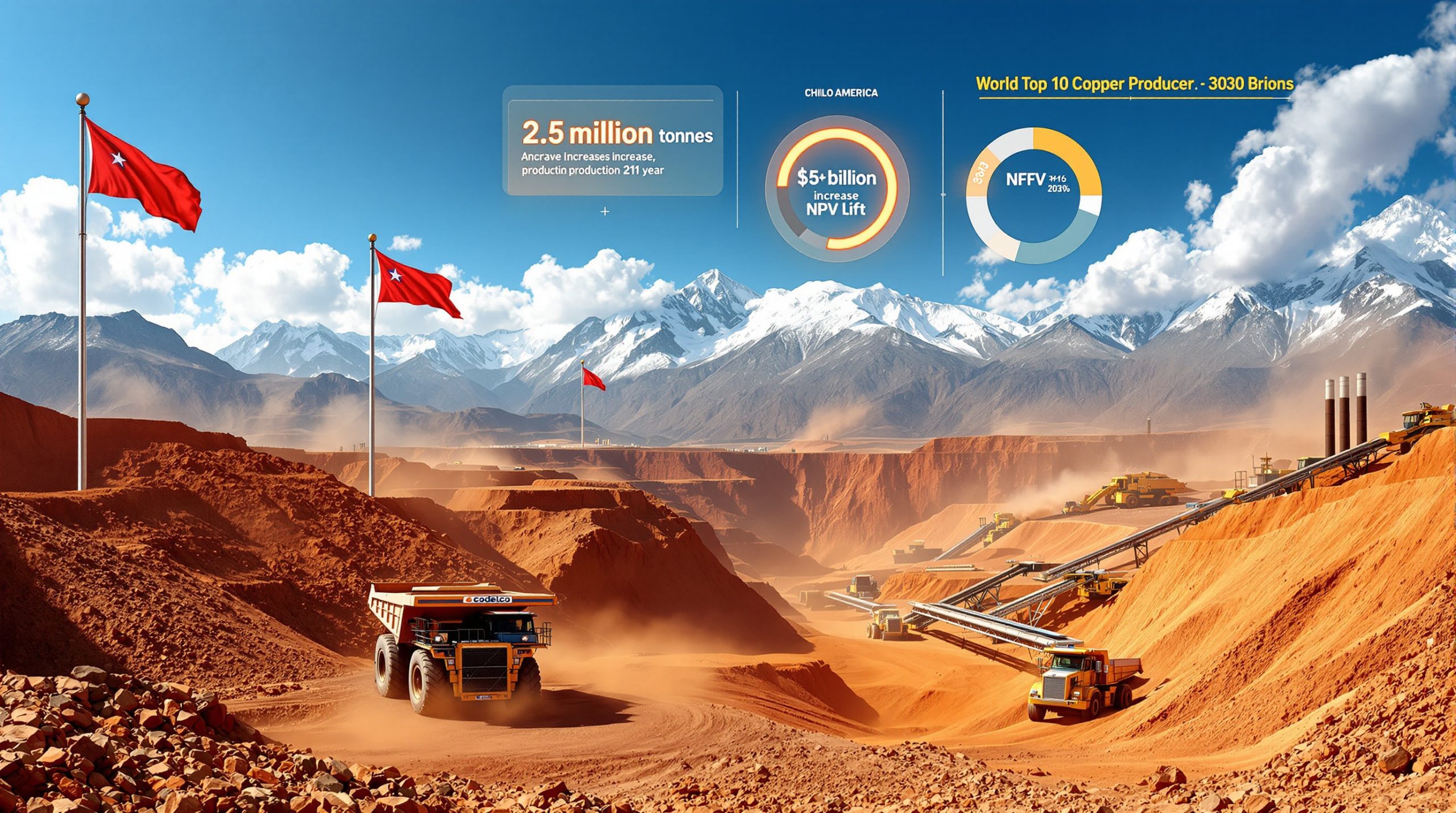What Triggered Rio Tinto's Strategic Shift in the US Aluminum Market?
In June 2025, the US administration doubled aluminum import tariffs to 50%, creating an unprecedented trade barrier that immediately disrupted established supply chains. This dramatic policy shift affected all aluminum imports, including those from traditional allies and integrated North American supply chain partners. The comprehensive application meant that even Canada, historically the largest supplier of aluminum to the United States, faced the full tariff burden despite deeply integrated production networks.
According to US government trade data, Canada accounts for 53% of aluminum imports to the US, highlighting the significant disruption caused by the tariff implementation. With the US aluminum industry operating only four smelters, domestic production capacity remains severely constrained, creating a challenging environment for both importers and consumers.
Canada-US Aluminum Trade Dynamics
Prior to the tariff implementation, Rio Tinto operated as Canada's largest aluminum producer with the United States as its primary export destination. The company's Canadian operations—including a refinery and five smelters in Quebec province—were specifically designed to serve American markets, leveraging Canada's abundant hydroelectric power resources and proximity to major US industrial centers.
These facilities take advantage of Quebec's inexpensive hydroelectric power and efficient transportation links to US markets, creating an integrated supply chain model that had been optimized for efficiency rather than trade barrier resilience. This arrangement represented efficient resource allocation, with production occurring in locations with comparative advantages in energy costs and transportation logistics.
From Exporter to Buyer: The Transformation
The 50% tariff rendered Rio Tinto's traditional business model economically unviable, forcing the company to develop alternative strategies. Rather than simply reducing shipments or seeking alternative export markets, Rio Tinto chose a counterintuitive approach: purchasing aluminum already physically located within the United States and reselling it to American customers.
As commodities trader Darrell Fletcher, a managing director at Bannockburn Capital Markets, noted, producers must "get creative" in response to the tariff regime when bringing metal from outside the US. This strategy allows Rio Tinto to maintain customer relationships while circumventing the tariff burden that made Canadian imports prohibitively expensive.
How Has Rio Tinto Implemented Its New Market Strategy?
Sourcing US-Based Aluminum
Rio Tinto has begun purchasing aluminum blocks—known as ingots—on the open market, with trading houses and banks facilitating these transactions. The metal comes from various sources, including competitors such as Alcoa Corp., Emirates Global Aluminum, and Century Aluminum Co. Some supplies are sourced from warehouses at various US ports, demonstrating the company's ability to leverage existing market infrastructure to support its strategic pivot.
This approach requires Rio Tinto to fundamentally restructure its supply chain operations and develop new supplier relationships that were unnecessary under its previous integrated model. The company's swift adaptation highlights the flexibility of multinational corporations when faced with sudden trade policy changes.
Scale of the Strategic Shift
The company has purchased at least 50,000 tons of aluminum from the US spot market since June 2025. This represents a significant volume but remains substantially below the 723,000 tons of aluminum Rio Tinto shipped to the US in the year's first half, most of which passed before the 50% levies took effect.
This volume discrepancy highlights both the scale of the disruption and the limitations of the company's adaptive strategy. The finite availability of aluminum within the US market constrains Rio Tinto's ability to fully replace its traditional export volumes with domestic purchases.
Operational Challenges and Limitations
This transformation has required Rio Tinto to fundamentally restructure its supply chain operations and commercial relationships. Instead of coordinating aluminum movement from Canadian smelters to American customers, the company now sources aluminum from US-based suppliers and distributors.
This approach requires developing new supplier relationships, modifying logistical arrangements, and restructuring commercial contracts to accommodate changed supply patterns. A Rio spokesperson declined to discuss specific details of the company's commercial strategy, citing confidential business matters.
What Financial Impact Have the Tariffs Had on Rio Tinto?
Direct Tariff Costs
Rio Tinto reported that the tariffs affecting markets on its Canadian-made aluminum generated gross costs of $321 million in the first half of 2025. This figure represents one of the most significant single-company financial impacts from trade policy measures in recent memory and illustrates the real-world consequences of tariff policies for multinational corporations.
The magnitude of this financial impact demonstrates how trade policy decisions can create substantial costs for companies with integrated cross-border operations, forcing rapid strategic adjustments to mitigate financial damage.
Market Premium Adjustments
The tariffs have driven aluminum prices in the US significantly higher than other international markets. The US Midwest premium—the amount added to global price benchmarks to deliver metal to that region—jumped 81% since early June 2025.
While global aluminum trades around $2,600 per ton on the London Metal Exchange, the US price after adding the Midwest premium approaches $4,200 per ton, creating a substantial price differential that affects all market participants. This geographic pricing disparity creates both challenges and opportunities depending on market position and supply chain configuration.
Incomplete Price Recovery
Despite the surge in US aluminum prices, the market has not fully factored in the new tariffs. The rapid escalation from 25% to 50% created a lag in premium adjustment that resulted in significant temporary losses for Rio Tinto and other affected producers.
This pricing gap between costs and recovery directly impacts the company's bottom line and creates ongoing financial pressure. The incomplete price recovery demonstrates how rapid policy changes can create substantial financial impacts even when markets eventually adjust to new cost structures.
How Are Global Aluminum Flows Being Redirected?
Shifting Trade Patterns
The aluminum tariff regime has created far-reaching supply chain disruptions that extend well beyond Rio Tinto's specific adaptations. Canadian aluminum producers have diverted substantial volumes away from traditional US destinations, creating new trade corridors and commercial relationships that may persist even if tariff policies are eventually modified.
As commodity strategist Ewa Manthey from ING Groep NV noted, "the tariffs are already starting to reshape global aluminum flows, particularly affecting producers in Canada." These redirected flows demonstrate how protectionist trade policies can create unintended consequences that extend beyond immediate target markets.
Geographic Price Dislocations
The redirection of aluminum flows has created significant regional price differences. European aluminum markets have experienced increased supply availability as North American exports have been redirected, while American markets have faced artificial scarcity driving premium prices to unprecedented levels.
This geographic arbitrage creates both opportunities and challenges for market participants, depending on their location and commercial relationships. Companies with flexible global supply chains can potentially benefit from these regional price differences, while those with fixed supply relationships face increased costs and disruption.
Logistical Adaptations
Companies have been forced to identify and develop new transportation routes, storage facilities, and distribution networks. The redirection of aluminum from North American to European markets has required coordination with shipping companies, port facilities, and inland transportation providers to accommodate changed trade flows.
These logistical adjustments have created additional costs and complexities beyond the direct impact of tariff payments. The need for rapid adaptation has tested supply chain resilience and highlighted the importance of operational flexibility in responding to trade policy disruptions.
What Are the Broader Industry Implications?
US Domestic Aluminum Production Constraints
Despite the tariffs, the US aluminum industry remains constrained by limited domestic production capacity. With only four operating smelters, domestic capacity is insufficient to meet demand, and new plants face high energy costs and long lead times.
As Ewa Manthey from ING Groep NV observed, "Despite the tariffs, the US aluminum industry remains constrained… Domestic capacity is insufficient to meet demand, and new plants face high energy costs and long lead times." This structural limitation undermines the effectiveness of tariffs in stimulating domestic production and creates ongoing supply challenges for American manufacturers.
Downstream Industry Impact
The ripple effects of supply chain disruption have extended throughout the aluminum value chain, affecting not only primary producers but also downstream manufacturers, distributors, and end users. American manufacturers that previously relied on integrated supply chains with Canadian suppliers have been forced to identify alternative sources or absorb significant cost increases.
The adjustment challenges have been particularly acute for smaller manufacturers who lack the negotiating power and operational flexibility of larger corporations. These downstream impacts highlight how trade protection measures intended to benefit specific industries can create unintended consequences throughout integrated supply chains.
Competitive Dynamics Shift
European aluminum consumers have benefited from increased supply availability as North American exports have been redirected to their markets, creating competitive advantages for European manufacturers relative to their American counterparts.
This geographic shifting of competitive dynamics illustrates how trade protection measures can create unintended consequences that may undermine the competitiveness of the industries they are intended to protect. The redirection of aluminum supplies has potentially strengthened the competitive position of non-US manufacturers who now enjoy improved access to previously US-bound materials.
How Are Other Aluminum Producers Responding?
Alcoa's Parallel Challenges
Alcoa, the largest US producer, reported that US tariffs on Canadian shipments in the first half of 2025 cost the company $135 million. Like Rio Tinto, Alcoa has been forced to adapt its cross-border operations and has adopted a clear policy of diverting aluminum away from the United States whenever possible, redirecting metal to Europe or traders in Canada.
This parallel response demonstrates how even companies with substantial US production assets have been negatively impacted by the tariff regime, forcing strategic adjustments that may have long-term implications for North American supply chains.
Domestic Producer Advantages
American aluminum producers have emerged as the primary beneficiaries of the tariff regime, experiencing significant increases in revenues and margins as domestic prices have climbed. Companies like Century Aluminum have seen substantial improvements in their financial performance as the Midwest premium has reached record levels, creating unprecedented profitability for domestic smelting operations.
This profitability boost for domestic producers represents the intended consequence of the tariff policy, though the broader economic impact across the entire value chain remains more complex and potentially negative when considering downstream effects.
Supplier Consolidation
The market disruption has accelerated consolidation trends among aluminum suppliers as companies seek scale and flexibility to navigate the changed trade environment. Smaller producers with limited geographic diversification have faced particular challenges, creating opportunities for larger companies to expand market share through acquisitions and strategic partnerships.
This consolidation trend may have long-term structural implications for the aluminum industry, potentially reducing competition and market diversity while increasing the influence of larger, more geographically diversified producers.
What Does This Mean for the Future of North American Aluminum Markets?
Long-Term Strategic Implications
Rio Tinto's current approach of purchasing and reselling aluminum within the US market provides a temporary solution but cannot fully replace the economies of scale and operational efficiencies that characterized its previous integrated supply chain model.
The company acknowledges that this approach represents a short-term adaptation rather than a sustainable long-term business model, particularly given the limited availability of surplus aluminum within the US market. This recognition suggests that further strategic evolution will be necessary if the tariff regime persists.
Supply Chain Resilience Investments
The disruption has accelerated investments in supply chain resilience across the aluminum industry. Companies are developing more flexible production and distribution networks, diversifying supplier relationships, and building redundancy into their operations to mitigate the impact of future trade policy changes.
These investments represent a structural shift in how the industry approaches risk management and operational planning. The emphasis on flexibility and redundancy may persist even if current trade barriers are eventually reduced, reflecting a fundamental reassessment of supply chain risk in an era of increasing trade policy uncertainty.
Potential Policy Evolution
The extreme market distortions created by the current tariff regime suggest that policy adjustments may eventually be necessary to restore more balanced and efficient trade patterns. Future negotiations could potentially lead to targeted exemptions, quota systems, or other mechanisms that would allow for more normalized trade while still addressing the administration's concerns about domestic production capacity and national security.
The evolution of aluminum trade policy will likely reflect ongoing tensions between protectionist impulses and the economic reality of deeply integrated North American supply chains that have developed over decades of relatively open trade.
How Can Businesses Navigate This New Market Reality?
Strategic Sourcing Approaches
Companies that rely on aluminum inputs should develop diversified sourcing strategies that reduce dependence on any single supply channel. This approach might include maintaining relationships with multiple suppliers across different geographies, exploring alternative materials where feasible, and developing inventory management strategies that provide buffers against supply disruptions.
A multi-faceted sourcing strategy can help businesses maintain operational continuity despite trade policy volatility and reduce vulnerability to regional supply constraints or price premiums.
Contract Structure Adaptations
The volatile pricing environment created by tariffs necessitates new approaches to contract structures and risk management. Buyers should consider incorporating more flexible pricing mechanisms, shorter contract durations, and explicit provisions for tariff-related cost changes.
These adaptations can help manage uncertainty and distribute risk more equitably between buyers and sellers. More sophisticated risk management approaches, including financial hedging strategies and commodity trading strategies, may become increasingly common as market participants adjust to persistent trade policy uncertainty.
Government Relations Focus
Given the outsized impact of trade policy on aluminum markets, companies throughout the value chain should increase their focus on government relations and policy advocacy. Engaging with policymakers to highlight the unintended consequences of tariffs and propose more targeted approaches to achieving policy objectives can help shape future decisions that better balance competing interests.
This engagement becomes particularly important for companies with cross-border operations that are disproportionately affected by broad tariff policies. Collaborative industry approaches that articulate the integrated nature of North American aluminum markets may prove more effective than individual company advocacy.
Conclusion: Market Adaptation in an Era of Trade Uncertainty
The transformation of Rio Tinto from aluminum supplier to buyer in the US market exemplifies the profound impact that Trump tariffs global impact can have on established business models and global supply chains. The company's ability to rapidly pivot its operational strategy demonstrates both the flexibility of global corporations and the significant costs associated with trade barriers that disrupt efficient market structures.
As aluminum prices in the US continue to diverge from global benchmarks, manufacturers, distributors, and end users must develop new strategies to maintain competitiveness in an increasingly fragmented global market. The current situation highlights the complex interplay between trade policy, corporate strategy, and US-China trade impacts, with implications that extend far beyond the immediate impact on aluminum producers.
For market participants throughout the aluminum value chain, success will depend on developing flexible, resilient operational models that can adapt to ongoing policy uncertainty while maintaining focus on long-term strategic objectives. The companies that navigate this challenging environment most effectively will be those that combine tactical agility with strategic foresight, positioning themselves to thrive regardless of how trade policies evolve in the mining industry evolution in the coming years.
Want to Capitalise on Major Mineral Discoveries?
Discover why significant mineral finds can lead to exceptional market returns by exploring Discovery Alert's dedicated discoveries page, powered by their proprietary Discovery IQ model which transforms complex mineral data into actionable investment insights. Begin your 30-day free trial today at https://discoveryalert.com.au/discoveries/ to position yourself ahead of the market.




